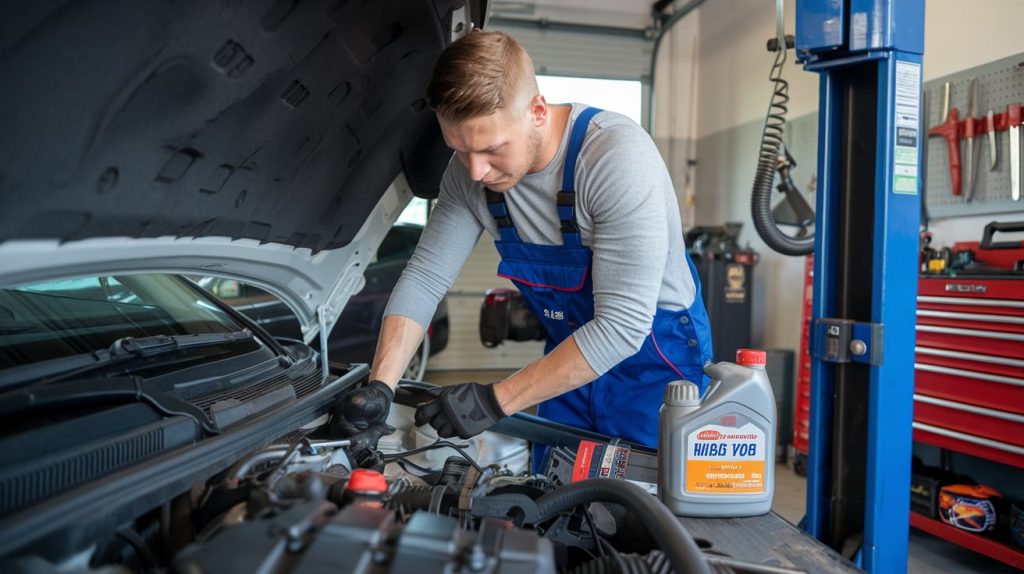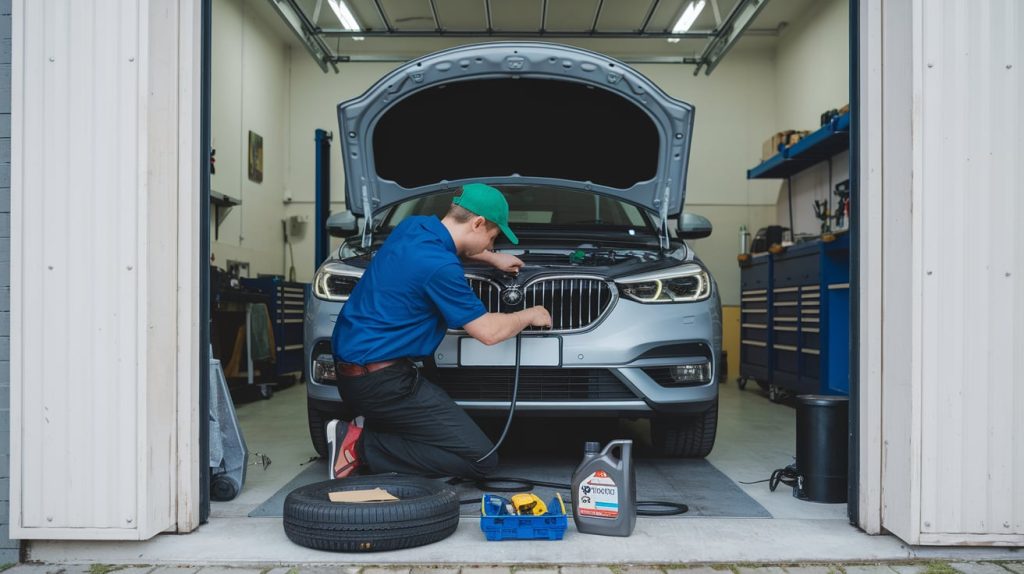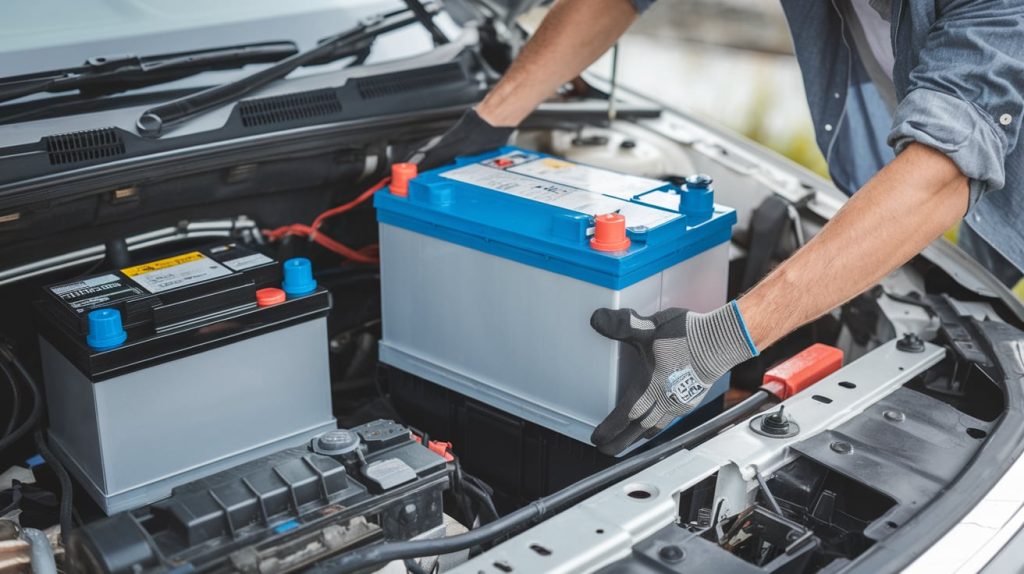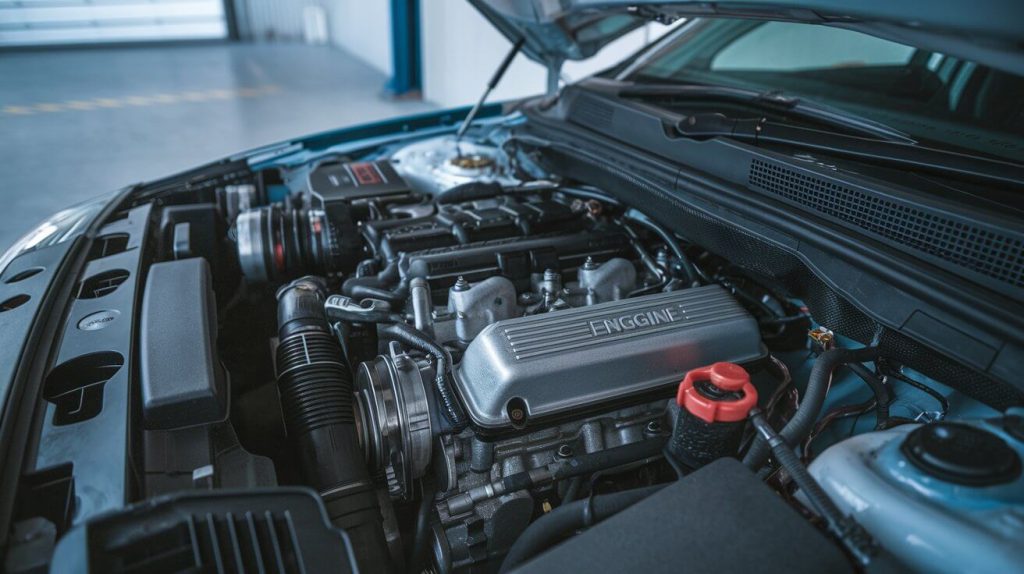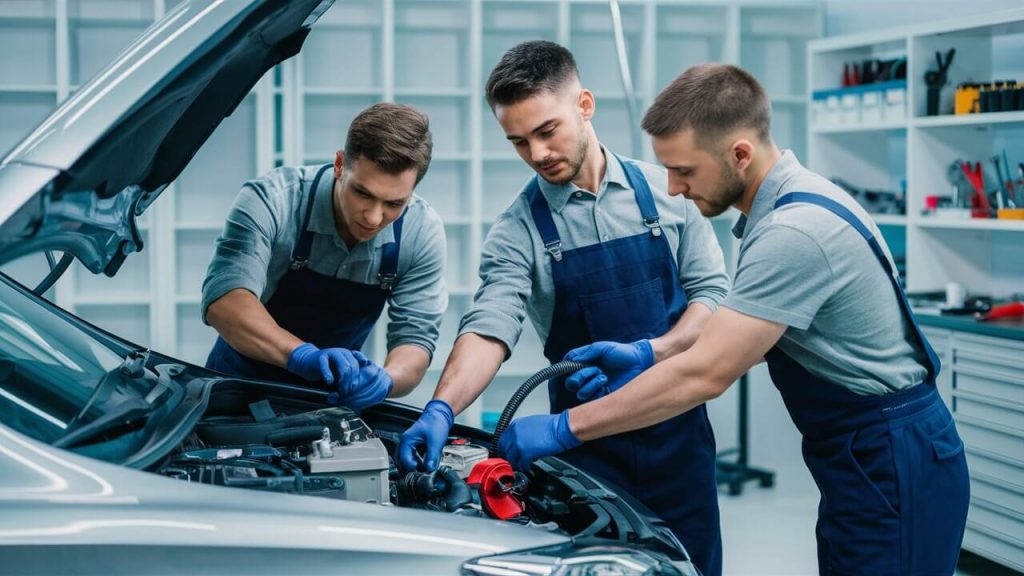Keeping your car in top shape doesn’t have to be complicated or costly. With the right care, you can prevent unexpected breakdowns, reduce repair costs, and enjoy a smoother, more reliable drive every day. In this guide, we’ll walk you through 15 essential car repair tips that every driver can benefit from. Whether it’s understanding routine car maintenance, recognizing warning signs, or learning quick DIY tricks, these tips will make a difference. Discover how simple steps can keep your car running smoothly and extend its lifespan.
Why Routine Car Maintenance Matters?
Routine car maintenance is essential for keeping your vehicle running smoothly and safely. Simple tasks like checking oil levels, monitoring tire pressure, and replacing worn parts can prevent major issues down the line. Regular car care not only improves fuel efficiency but also extends the lifespan of your vehicle, saving you money on car repairs and gas. A well-maintained car performs better, reduces the risk of unexpected breakdowns, and offers peace of mind on the road. With a little attention to car maintenance tips, you can enjoy a safer, more reliable drive every day.
Signs that Your Car Needs Maintenance
Knowing when your car needs maintenance can make a big difference in avoiding major issues and keeping your vehicle safe on the road. Here are some common signs to look out for:
- Unusual sounds – such as squealing, grinding, or knocking noises.
- Dashboard warning lights – alerts for engine, oil, brakes, or other systems.
- Fluid leaks – visible oil, coolant, or other fluids under the car.
- Poor fuel efficiency – a noticeable drop in mileage or more frequent fuel fill-ups.
- Rough idling or stalling – the engine feels unsteady or cuts out unexpectedly.
- Excessive exhaust smoke – white, blue, or black smoke coming from the exhaust.
If you notice any of these warning signs, it’s best to schedule a check-up. Our Expert technicians at Auto Repair UAE offer tailored car repair services. Addressing minor issues early can help prevent costly car repairs and keep your car running smoothly for miles to come.
15 Must-Know Car Repair Tips for Every Driver
Routine car maintenance doesn’t have to be complicated, but it does make a huge difference in the performance, safety, and lifespan of your vehicle. Here are 15 essential car repair tips every driver can follow to keep their car in optimal condition.
Tip: 1 Check Oil Regularly
- Why It’s Important: Oil lubricates your engine, reduces friction, and prevents overheating. Low or old oil can lead to severe engine damage, potentially requiring costly car repair.
- How to Check Oil Levels:
- Park on a level surface and wait for the engine to cool.
- Locate the oil dipstick, pull it out, wipe it clean, then reinsert and remove it again to check the level.
- Oil should be between the minimum and maximum markers and have a clear, amber color.
- When to Change Oil:
- Every 3,000-5,000 miles for older cars
- Every 7,500-10,000 miles for newer cars with synthetic oil
- As recommended in the car’s manual
- If the oil looks dark or dirty
- When the oil change indicator lights up
- After long road trips or heavy towing
- Before winter or summer for extreme climates
Regular oil checks and timely changes are simple steps to avoid serious engine damage and unnecessary car repair costs.
Tip:2 Monitor Tire Pressure
- Why It’s Important: Proper tire pressure improves fuel efficiency, enhances safety, and prolongs tire life, helping you avoid unnecessary car repair costs related to tire damage or wear.
- How to Check Tire Pressure:
- Use a tire pressure gauge, either digital or manual.
- Compare the reading with the recommended PSI (pressure level) in your car manual or on the driver’s side door sticker.
- Sedans (e.g., Toyota Camry, Honda Accord): 30-35 PSI
- Compact Cars (e.g., Honda Civic, Toyota Corolla): 32-35 PSI
- SUVs (e.g., Ford Explorer, Toyota Highlander): 35-40 PSI
- Trucks (e.g., Ford F-150, Chevrolet Silverado): 40-45 PSI, especially if carrying heavy loads
- Sports Cars (e.g., Porsche 911, BMW M3): 30-32 PSI for performance and optimal handling
- Electric Vehicles (e.g., Tesla Model 3, Nissan Leaf): 42-45 PSI, as higher PSI levels help maximize range.
- How Often to Check: Check tire pressure once a month and before long trips. Extreme weather can also affect tire pressure, so monitor it in hot and cold temperatures.
- Additional Tip: Over- or under-inflated tires wear unevenly and can reduce braking performance, and may lead to avoidable car repair expenses. Regular monitoring ensures a smoother and safer ride.
Tip: 3 Replace Air Filters
- Why It’s Important: Air filters keep debris from entering the engine, improving fuel efficiency and engine performance.
- When to Replace:
- Every 12,000-15,000 miles
- Once a year, as a general rule
- When fuel efficiency drops
- If the engine makes unusual sounds
- When the filter looks visibly dirty
- After driving in dusty or polluted areas frequently
- Signs of a Dirty Filter:
- Reduced fuel efficiency
- Unusual engine noises
- Trouble starting the engine
- Weak airflow inside the cabin
- Musty or unpleasant smells
- Visibly clogged or dark filter
- How to Replace:
- Locate the filter compartment (usually under the hood or behind the glove box).
- Open the compartment by releasing any clips or screws.
- Remove the old filter carefully.
- Insert the new filter in the same position as the old one.
- Close the compartment securely.
Regular air filter replacements not only improve your car’s performance but also help you avoid unnecessary engine issues, saving you time and money on car repair in the long run.
Tip: 4 Inspect Brakes Regularly
- Why It’s Important: Brakes are crucial for safety, allowing you to stop effectively and avoid accidents. Regular brake inspections can prevent costly car repairs and help maintain reliable performance.
- Signs of Worn Brakes:
- Squealing or grinding noises when braking
- Vibrations or pulsing in the brake pedal
- Longer stopping distance
- The brake warning light on the dashboard
- Soft or spongy brake pedal feel
- Visible wear or thinning on brake pads
- What to Check:
- Brake Pads: Check if the brake pads look too thin. If they’re less than 1/4 inch thick, they should be replaced. Worn brake pads can make it harder to stop safely.
- Brake Fluid: Look at the brake fluid level and color. Low or dark fluid can affect how well your brakes work. Refill as needed, using the right type of fluid.
- Rotors: Inspect the rotors for any warping, scratches, or rust. Warped rotors can cause vibrations when you brake. Uneven or damaged rotors can make stopping harder.
- Brake Lines: Check brake lines for cracks, leaks, or rust. Damaged brake lines can lead to fluid loss and brake failure. Replace any lines that look worn or damaged.
- Brake Pedal Feel: Press the brake pedal to see how it feels. A firm pedal is normal, but if it feels soft or spongy, there might be air in the brake lines. This could mean it’s time for more brake fluid or bleeding.
- Brake Calipers: Look at the calipers to see if they’re sticking or look worn. Sticking calipers can cause uneven braking. Worn calipers can lead to weaker braking power.
- Recommendation: Inspect brakes every 10,000 miles or at least once a year. We also cover car lock repair services in the UAE, helping you stay safe inside and out.
Tip: 5 Look for Fluid Leaks
- Why It’s Important: Leaks can indicate serious problems with your car’s systems, including the engine, transmission, and coolant.
- Types of Fluids to Monitor:
- Oil: A brown or black puddle usually means an oil leak.
- Coolant: Green, orange, or pink fluid under the car may indicate a coolant leak.
- Transmission Fluid: Typically red or brown; leaks can affect shifting.
- What to Do If You Spot a Leak:
- Identify the Fluid: Check the color and where the fluid is leaking. Oil is usually brown or black, coolant is green or pink and brake fluid is clear or light brown.
- Check Levels: Look at the fluid levels under the hood. Refill if they’re low to prevent damage.
- Avoid Driving: If the leak is large, don’t drive the car. Serious leaks can lead to engine or brake failure.
- Get It Fixed: Take the car to a mechanic to repair the leak. They can find the source and fix it safely.
- Watch for New Leaks: After repairs, keep an eye out for more leaks. Catching problems early helps keep your car in good shape.
Regularly checking for fluid leaks can save you from unexpected breakdowns and expensive car repairs. For professional inspections and repairs, visit Auto Repair UAE, we’ll keep your car in top condition!
Tip: 6 Test the Battery
- Why It’s Important: A weak or failing battery can leave you stranded, especially in extreme temperatures.
- Signs of a Failing Battery:
- Slow engine start
- Dim headlights or interior lights
- Clicking sound when turning the key
- Corrosion on battery terminals
- Electrical issues with accessories
- How to Test the Battery:
- Use a Multimeter: Check voltage; a healthy battery reads around 12.6 volts.
- Look for Corrosion: Clean terminals if corrosion is present to ensure a good connection.
- Turn on Headlights: Dim lights can indicate a weak battery.
- Get a Professional Test: Many auto shops offer free battery testing.
- Replacement Timing: Replace every 3-5 years or sooner if it shows signs of weakness.
Stay ahead of battery issues with regular tests. For professional battery testing and replacement, visit Auto Repair UAE, we ensure your car starts reliably every time!
Tip: 7 Check Belts & Hoses
- Why It’s Important: Belts and hoses are vital for running essential systems like the cooling system, alternator, and power steering. Regular checks can prevent unexpected breakdowns and costly car repair.
- Signs of Wear:
- Belts: Cracks, fraying, or glazing indicate it’s time for replacement.
- Hoses: Look for leaks, bulges, or signs of cracking.
- How Often to Inspect: Inspect belts and hoses every six months or at oil change intervals.
- Replacement: Replace as recommended in your vehicle’s manual to avoid sudden failures.
Tip: 8 Keep Headlights & Taillights Working
- Why It’s Important: Functional lights improve visibility and are crucial for night driving and safety.
- How to Check: Turn on headlights, taillights, and brake lights, and ensure all are working correctly.
- When to Replace:
- Burned-Out Bulbs: Replace bulbs right away when they go out.
- Dimming Lights: If lights appear dim, consider replacing the bulbs.
- Regular Check-Up: Inspect bulbs during routine maintenance to ensure they’re working well.
- Extra Tip: Clean the lenses regularly to keep the lights bright and clear. For expert bulb replacements and light system inspections, visit Auto Repair UAE, we’ll keep your lights shining bright!
Tip: 9 Clean or Replace Spark Plugs
- Why It’s Important: Spark plugs ignite the air-fuel mixture in the engine; worn plugs can cause misfires, reduced fuel efficiency, and rough idling.
- Signs of Worn Spark Plugs:
- Trouble starting the engine
- Rough idling or misfiring
- Reduced fuel efficiency
- Sluggish acceleration
- Engine warning light on the dashboard
- How Often to Replace:
- Every 30,000 miles or as recommended in your car’s manual
- Once a year for older vehicles
- If you notice performance issues, like misfiring or rough idling
- DIY Tip: Spark plugs are often accessible and can be cleaned or replaced with basic tools.
Tip: 10 Maintain Windshield Wipers
- Why It’s Important: Wipers provide clear visibility, especially in rain, snow, or dust.
- Signs of Wear:
- Streaking on the windshield
- Skipping across the glass
- Squeaking noises during use
- Replacement Timing:
- Every 6-12 months, or as needed
- At the start of winter or rainy seasons
- When visibility is reduced due to wiper wear
- Tip: Keep the windshield clean to prevent rapid wear on the wiper blades.
Tip: 11 Examine the Exhaust System
- Why It’s Important: A healthy exhaust system reduces harmful emissions and keeps the cabin free of fumes.
- Signs of Exhaust Issues:
- Loud noises (especially rumbling or rattling), may indicate leaks.
- Visible rust or holes in the pipes.
- How to Check:
- Look under the car for visible damage or rust on exhaust pipes.
- Listen for unusual sounds like gurgling or rattling.
- Have a professional inspect the exhaust system annually. Don’t miss our article on why radiator fan replacement is crucial to avoid overheating.
Avoid major exhaust problems by addressing these issues early. For professional exhaust system checks and repairs, trust Auto Repair UAE to keep your car running efficiently and safely!
Tip: 12 Rotate Tires Regularly
- Why It’s Important:
- Promotes even tire wear, extending tire life
- Improves handling and vehicle stability
- Enhances fuel efficiency by reducing rolling resistance
- Prevents costly premature tire replacements
- When to Rotate:
- Every 5,000-7,500 miles
- At each oil change
- If you notice uneven tire wear
- DIY Tip: Mark tires after each rotation to remember their previous position.
Tip: 13 Keep the Engine Cool
- Why It’s Important: Overheating can cause serious engine damage, including warped components and blown head gaskets.
- How to Check Coolant:
- Make sure the engine is cool before checking.
- Locate the coolant reservoir under the hood.
- Check that the coolant level is between the “MIN” and “MAX” lines.
- Add coolant if the level is low, using the type specified in your car manual.
- Coolant Change Frequency: Flush the system every 30,000 miles or as per the manufacturer’s advice.
- Warning Signs: High-temperature gauge, sweet smell from the hood, or visible coolant leaks.
Tip: 14 Replace the Cabin Air Filter
- Why It’s Important: Keeps the air inside your car fresh, improving air quality and reducing allergens.
- Signs It’s Dirty:
- Weak airflow from the vents
- Unpleasant or musty odors inside the car
- Increased dust on interior surfaces
- Reduced effectiveness of heating or air conditioning
- Replacement Timing:
- Sedans (e.g., Toyota Camry, Honda Accord): Replace around 12,000-15,000 miles or once a year.
- Compact Cars (e.g., Honda Civic, Toyota Corolla): Every 12,000 miles, or sooner if driving in dusty areas.
- SUVs (e.g., Ford Explorer, Toyota Highlander): About every 10,000-15,000 miles, especially with mixed terrain.
- Trucks (e.g., Ford F-150, Chevrolet Silverado): Replace every 10,000-12,000 miles if used for towing or rough roads.
- Electric Vehicles (e.g., Tesla Model 3, Nissan Leaf): Check every 12,000 miles or once a year, as city driving can affect air quality.
- DIY Tip: Many cabin air filters are easily accessible in the glove box or under the dashboard.
For professional cabin air filter checks and replacements, visit Auto Repair UAE and enjoy a healthier driving environment!
Tip: 15 Wash & Wax Regularly
- Why It’s Important: Washing removes dirt and contaminants, while waxing protects paint from UV rays and corrosion.
- Washing Frequency: Wash every two weeks or as needed to remove dirt and road salt.
- Waxing Benefits:
- Protects Paint: Shields the paint from UV rays, dirt, and pollutants, preventing fading and damage.
- Repels Water: Creates a smooth surface that makes water beads up and roll off, reducing water spots.
- Prevents Rust: Adds a protective layer that keeps moisture from penetrating the paint, reducing rust risk.
- Enhances Shine: Leaves a glossy finish that makes the car look newer and well-maintained.
- Easier Cleaning: Dirt and grime stick less to waxed surfaces, making the car easier to wash.
- DIY Tip: Use a microfiber cloth and car-specific products to avoid scratching the paint.
These car maintenance tips not only keep your vehicle running smoothly but also help you avoid unexpected car repairs, extend your car’s life, and improve your driving safety. Regular care, even simple checks, can make a huge difference. For professional maintenance and expert car repairs, visit Auto Repair UAE and let us help you keep your car in top condition!
Get Expert Auto Repair at Our Garage
Is your vehicle in need of reliable maintenance or repairs? Don’t wait for small issues to turn into costly problems. Our auto repair UAE garage offers professional, high-quality service tailored to keep your car running smoothly. From routine maintenance to complex repairs, our experienced technicians are here to handle it all. We use top-grade parts and equipment to ensure your vehicle gets the best care possible. Contact us today to schedule an appointment and experience service that puts you and your vehicle first!
FAQs About Car Repair Tips
- How often should I replace my car’s spark plugs?
Spark plug replacement typically depends on your car model and the type of spark plug. Standard plugs last around 30,000 miles, while iridium or platinum plugs can last up to 100,000 miles. Check your car manual for specific recommendations. - What’s the best way to clean my car’s engine bay safely?
To clean your engine bay, first disconnect the battery and cover sensitive areas like the alternator. Use a gentle degreaser, spray lightly, and rinse with low-pressure water. Finish by drying with a microfiber cloth. This keeps the engine area clean without risking damage. - When should I change my transmission fluid?
Transmission fluid should be changed every 30,000-60,000 miles, depending on your car type and driving conditions. For vehicles under heavy use, such as towing or off-road driving, more frequent changes are recommended. - How can I improve my car’s fuel efficiency?
Simple maintenance steps like keeping tires inflated, replacing air filters, and getting regular oil changes can boost fuel efficiency. Driving habits also matter—avoid sudden stops, accelerate gradually, and reduce excess weight in the car. - What should I do if my brakes feel spongy?
Spongy brakes can mean there’s air in the brake lines, low brake fluid, or worn brake parts. It’s important to have your brakes inspected immediately to ensure safety and prevent further damage. - How do I know when to replace my car’s timing belt?
Most timing belts need replacement every 60,000-100,000 miles. If your car has a timing chain, it may last longer but should be checked during routine maintenance. Refer to your manual for your specific model’s recommendation. - Is it necessary to rotate tires, and how often?
Yes, tire rotation promotes even wear and extends tire life. It’s generally recommended to rotate tires every 5,000-7,500 miles, or at every oil change.

